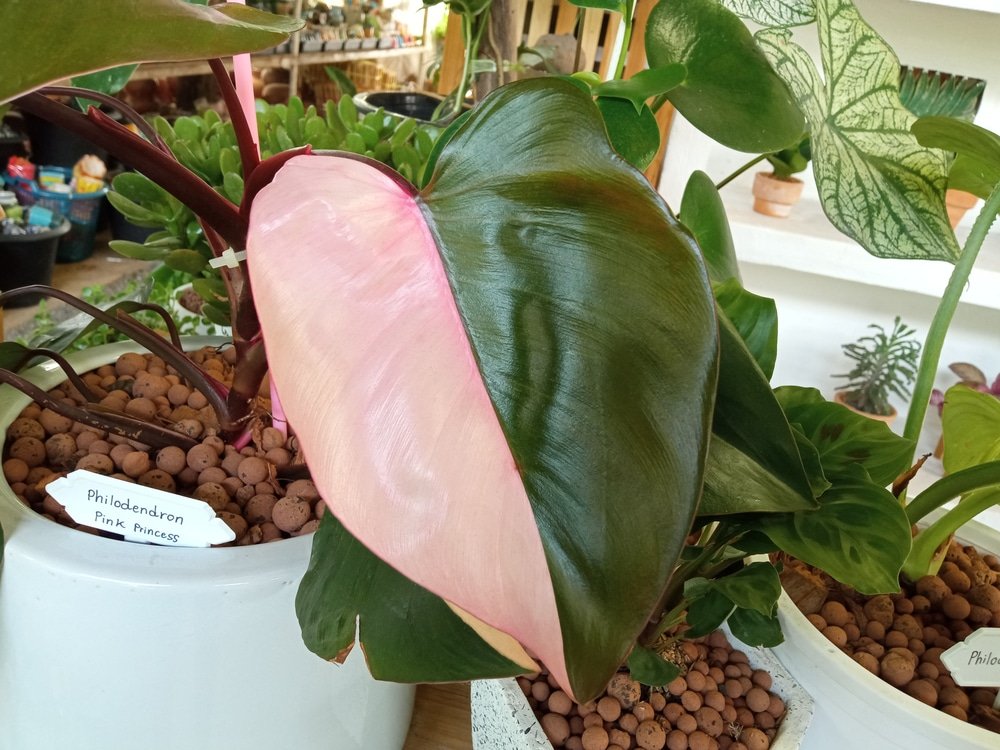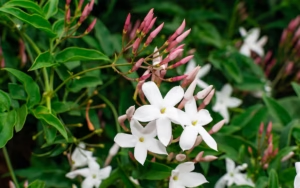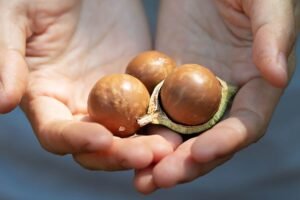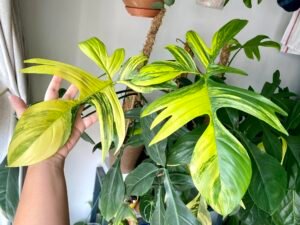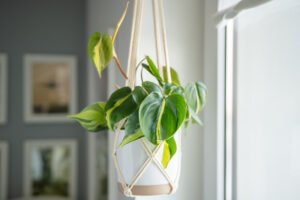The Philodendron ‘Pink Princess’ is one of the most sought-after houseplants, known for its dazzling pink variegation and deep green leaves. If you’ve ever dreamed of owning a houseplant that doubles as a piece of art, this might be the one for you. While it’s relatively easy to care for, understanding its specific needs will help it flourish. In this guide, we’ll dive deep into everything you need to know about growing, caring for, and propagating this unique plant.
How to Grow Philodendron ‘Pink Princess’
Growing the Philodendron ‘Pink Princess’ successfully requires understanding its natural environment and replicating those conditions in your home.
Lighting Requirements
This plant thrives in bright, indirect light, which mimics the dappled sunlight it would receive in its native tropical forests. Direct sunlight can scorch the pink parts of the leaves, causing discoloration or even burning. Conversely, low light can diminish the vibrancy of the pink variegation, leading to more green-dominant growth.
To ensure optimal lighting:
- Place your plant near an east-facing window for soft morning light.
- Use sheer curtains if it’s near a south or west-facing window to diffuse intense sunlight.
- Consider using grow lights if natural light is limited.
Soil and Watering Needs
The philodendron pink princess plant thrives in soil that is both nutrient-rich and well-draining. A mix of potting soil, perlite, and orchid bark is perfect for balancing water retention and aeration.
When it comes to watering:
- Water thoroughly when the top inch of soil is dry. Insert your finger to check moisture levels.
- Avoid overwatering, as this can lead to root rot, a common issue for Philodendrons. Always allow excess water to drain.
- During winter, water less frequently as the plant enters a semi-dormant phase.
Where to Grow Philodendron ‘Pink Princess’
Choosing the right location for your pink princess philodendron is key to its health and beauty.
Indoor vs. Outdoor Cultivation
Indoors, this plant thrives in controlled environments with steady temperatures ranging from 65°F to 80°F. Sudden drops in temperature or exposure to drafts can stress the plant and cause leaf damage. Outdoors, it can only grow in tropical climates where it’s shaded from harsh sun and protected from cold snaps.
Ideal Placement Indoors
Humidity is essential for preserving the pink variegation and preventing the leaf edges from browning. Aim for a humidity level of at least 60%. To achieve this:
- Use a humidifier in drier climates or during the winter.
- Group your plant with others to create a microclimate of higher humidity.
- Place the plant on a tray filled with pebbles and water, ensuring the pot doesn’t sit directly in the water.
How to Plant Philodendron ‘Pink Princess’
The planting process plays a significant role in ensuring your large pink princess philodendron adapts well to its environment.
Choosing the Right Pot
Select a pot that is:
- Well-draining: Ensure it has sufficient drainage holes.
- Slightly larger than the plant’s current root ball, allowing for growth without causing overpotting issues.
- Made of breathable materials like terracotta or ceramic.
Step-by-Step Planting Instructions
- Prepare the soil mix using equal parts potting soil, perlite, and orchid bark.
- Gently remove the plant from its old pot, being careful not to damage the roots.
- Place the plant in the new pot, ensuring the top of the root ball sits slightly below the rim.
- Backfill with soil, tamping lightly to remove air pockets.
- Water thoroughly to settle the soil. Let the excess water drain out before placing the pot back in its spot.
How to Care for Philodendron ‘Pink Princess’
Proper care ensures that your philodendron pink princess care routine promotes healthy growth and vibrant variegation.
Feeding and Fertilizing
To encourage lush growth and maintain the vibrant pink coloring, fertilize regularly.
- Use a balanced liquid fertilizer (e.g., 20-20-20) diluted to half strength.
- Apply every 4-6 weeks during the growing season (spring and summer).
- Avoid over-fertilizing, as this can lead to fertilizer burn or excessive green growth.
Cleaning and Maintenance
Dust buildup can block light absorption and reduce photosynthesis efficiency.
- Gently wipe the leaves with a damp cloth every 2-3 weeks.
- Avoid using leaf shine products, as they can clog the leaf pores.
How to Prune Philodendron ‘Pink Princess’
Pruning is crucial for shaping your philodendron pink princess plant and promoting new growth.
Reasons to Prune
Prune your plant to:
- Remove yellowing or damaged leaves.
- Control the plant’s size and shape.
- Encourage new, bushier growth.
Pruning Process
- Use sharp, sterilized scissors or pruning shears.
- Identify leaves or stems that need trimming, especially those showing signs of damage or crowding.
- Cut just above a node or healthy leaf junction to stimulate growth.
- Dispose of pruned material to avoid spreading pests or diseases.
How to Propagate Philodendron ‘Pink Princess’
Propagation is an exciting way to grow new plants from your existing philodendron pink princess.
Stem Cuttings in Water
- Select a healthy stem with at least one node and leaf.
- Cut just below the node with clean scissors.
- Place the cutting in a jar of water, ensuring the node is submerged.
- Change the water weekly and wait for roots to grow (2-4 weeks).
- Once roots are 2-3 inches long, transfer the cutting to a pot with soil.
Soil Propagation
Alternatively, you can plant cuttings directly into a soil mix. Ensure the soil is kept consistently moist until roots establish.
Pests and Diseases
Like most houseplants, the philodendron pink princess plant can face challenges from pests and diseases.
Pests to Watch Out For
Common pests include:
- Spider Mites: Look for fine webbing on leaves.
- Mealybugs: Appearing as white, cotton-like spots.
- Aphids: Tiny insects clustering on new growth.
Combat pests by:
- Washing the leaves with a gentle spray of water.
- Applying insecticidal soap or neem oil.
- Isolating infested plants to prevent spread.
Common Diseases
The most frequent issue is root rot, caused by overwatering or poor drainage. Yellowing leaves can signal this problem. Always allow the soil to dry slightly between waterings.

Advice on Buying Philodendron ‘Pink Princess’
Finding a pink princess philodendron for sale can be challenging due to its popularity, but with the right approach, you can secure a healthy plant.
Where to Shop
- Local Nurseries: Check reputable nurseries for plants that are well-cared for.
- Online Retailers: Many websites specialize in rare plants. Ensure the seller has good reviews and offers healthy specimens.
- Plant Swaps: Join local plant communities or online forums to trade or purchase from fellow enthusiasts.
Where to shop online
What to Check Before Buying
When buying, examine the plant carefully for:
- Healthy leaves with vibrant pink variegation.
- Signs of pests like webs or sticky residue.
- Firm, well-anchored roots (if visible).
Conclusion
The Philodendron ‘Pink Princess’ is more than just a plant; it’s a living masterpiece that adds beauty and elegance to any space. By following the detailed tips in this guide, you can cultivate a thriving, vibrant plant that will be the envy of fellow plant lovers.
Read also: https://techcrunchs.net/how-to-grow-and-care-dracaena-plant
Read also: https://techcrunchs.net/how-to-grow-and-care-hickory-tree-a-complete-guide

